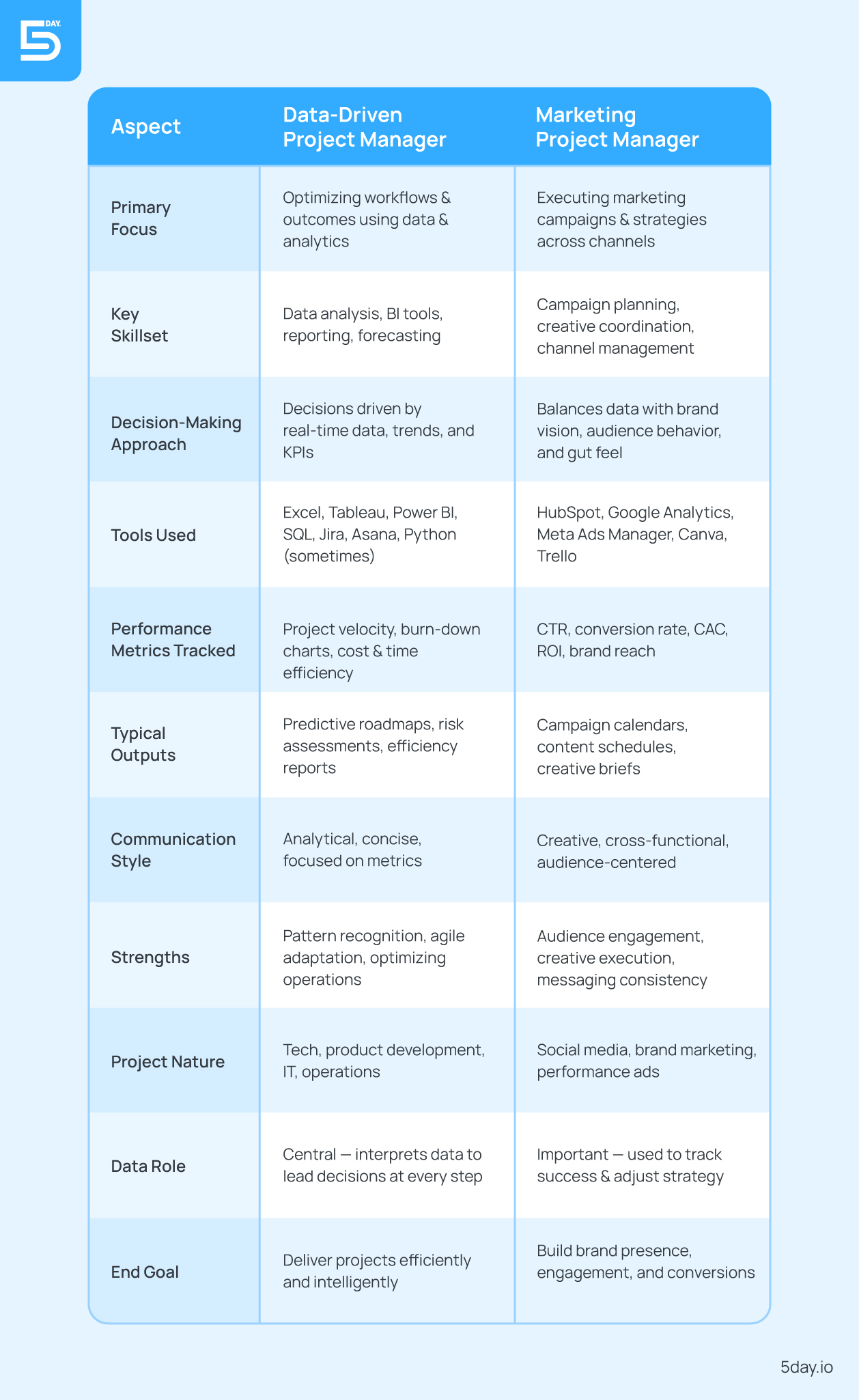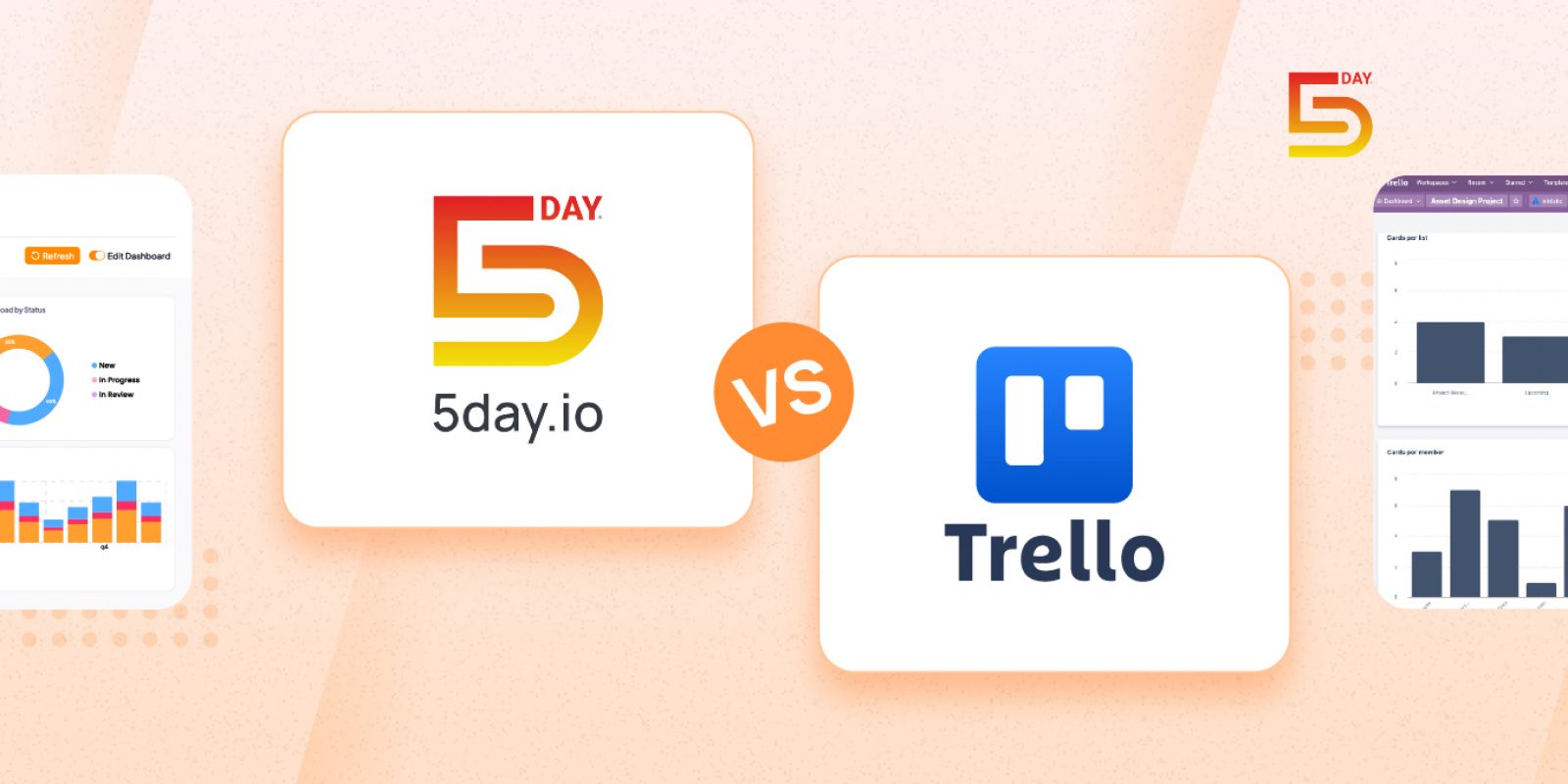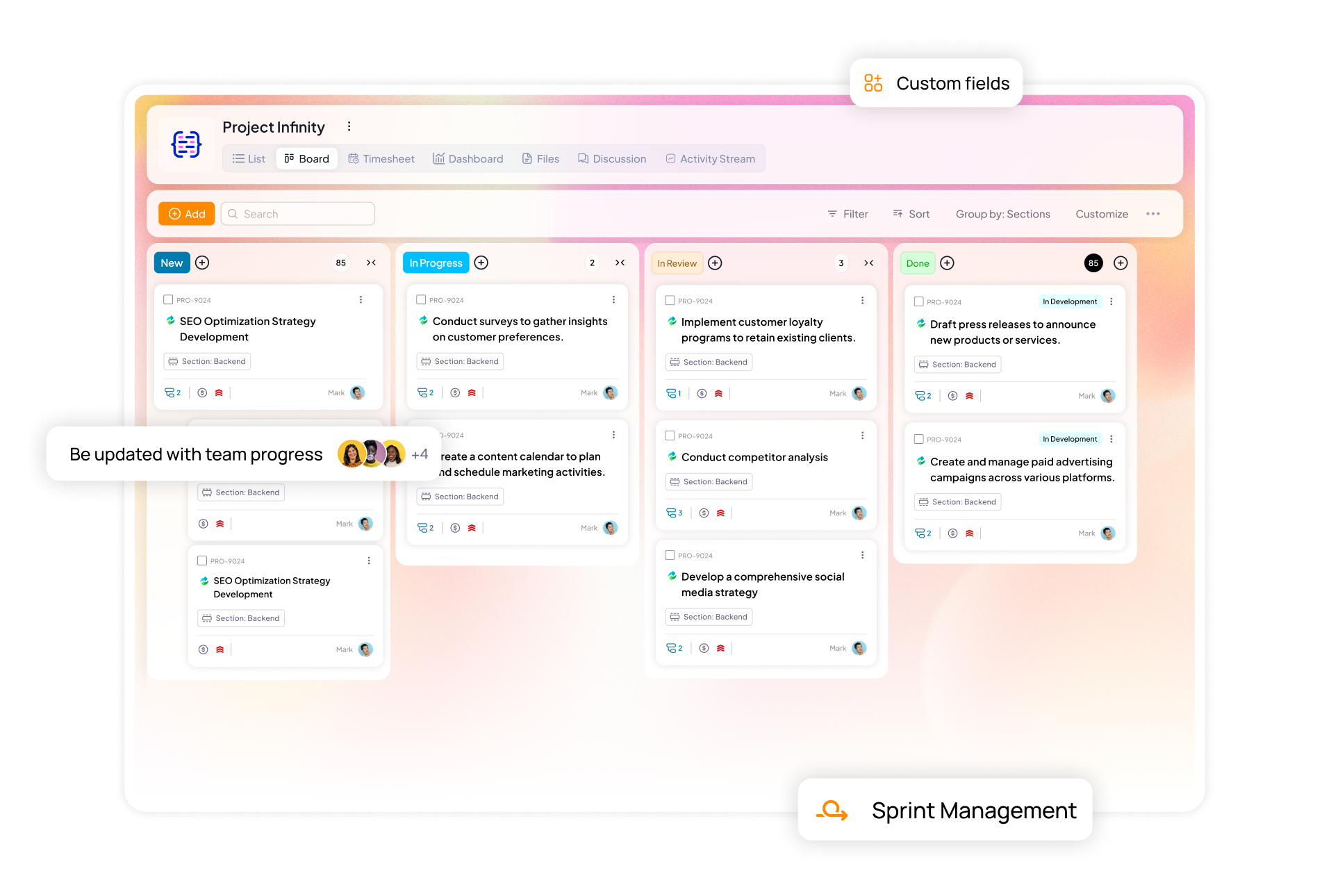The best marketing agencies are no longer judged solely by delivery timelines or volume. They are viewed by how effectively they turn the tables and make the existing market situation favorable to the client.
And for that, you need data. Monitoring metrics is the only way to get your hands on the data and use it to your and your client’s benefit. Many organizations still treat data as an afterthought, something stitched onto reporting cycles, rather than the foundation of project planning, and project scheduling.
Using it to your benefit changes the game completely and puts you way ahead of the game.
This guide is for those already fluent in project management frameworks, and who want to move beyond managing marketing projects, and toward engineering performance with the right data to guide them.
What is data-driven project management?
Data-driven project management means using numbers and performance data to make smarter project decisions. It involves collecting and analyzing data at every step to help teams plan better and get better results.
Rather than relying on gut feelings or anecdotal experience, data-driven managers use:
- Historical performance data
- Real-time dashboards and KPIs
- Predictive analytics and forecasting models
This allows teams to make smarter decisions about timelines, and priorities, all backed by evidence.
How does it differ from traditional project management?
Traditional project management often depends on the personal experience of the project lead. While experience is valuable, it can also be subjective or outdated.
Aspect | Intuition-Based | Data-Driven |
Decision Basis | Personal judgment or past experience | Quantifiable metrics and analytics |
Accuracy | Variable, often assumption-driven | Consistently measurable and verifiable |
Risk Management | Reactive | Proactive and predictive |
Scalability | Hard to transfer or replicate | Easily systematized across teams |
Accountability | Hard to trace or justify | Transparent, backed by clear data trails |
Why does this approach matter to marketing?
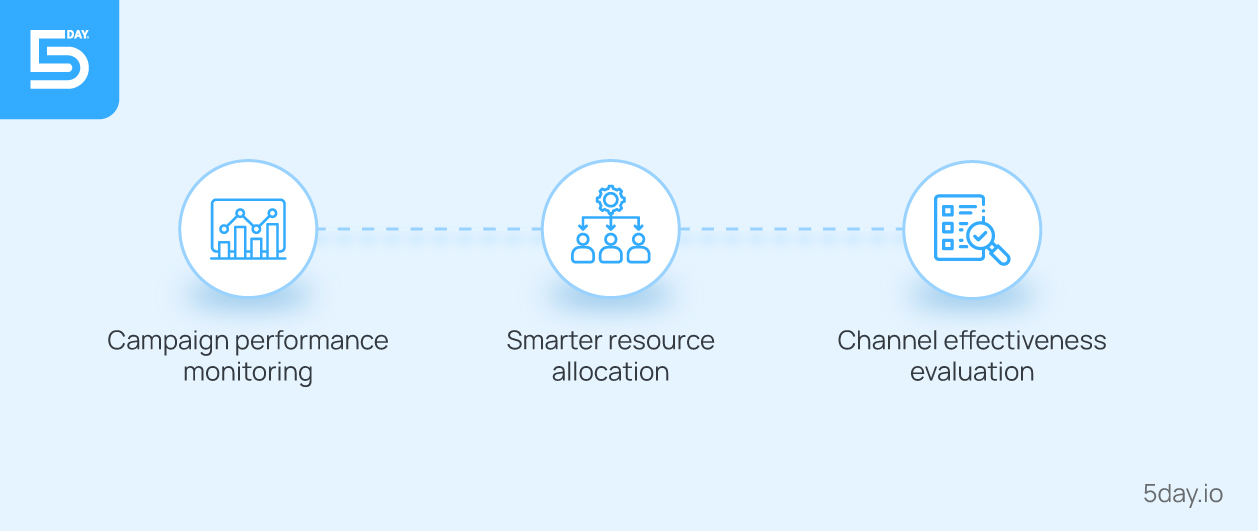
Customer preferences shift quickly, and campaigns often rely on many moving parts. In this kind of environment, relying on gut feeling alone is risky. A data-driven approach helps marketing teams stay in control. It gives them clear visibility into what’s working, what’s not, and how to adjust quickly.
1. Campaign performance monitoring
Instead of waiting until the end of a campaign to find out if it worked, data-driven marketers track performance in real time. They look at key metrics like click-through rates, conversions, impressions, and engagement as the campaign runs. This allows them to spot what’s underperforming early and make quick changes.
Being able to act in the moment often makes all the difference between an average campaign and one that delivers real results.
2. Smarter resource allocation
When marketing teams analyze data from past projects, they start to see patterns. They can identify which campaigns brought the best returns, and where the most effort is needed. With this knowledge, they can plan better assigning the right people to the right work and setting realistic budgets.
Read Also: How to Plan and Execute a Campaign?
3. Channel effectiveness evaluation
Not every marketing channel works the same way for every goal. Some channels might be great for building awareness, while others are better at driving conversions.
Data helps teams see which platforms are performing best. It also shows how audiences interact with content on each channel. This means marketers can focus their efforts on what’s actually working and stop wasting time or budget on what isn’t.
Key roles in a data-driven marketing environment
1. The data-driven project manager
This individual is more than a task coordinator. They are the architect of insight, responsible for:
- Defining measurable goals, project deliverables and KPIs at the outset
- Setting up dashboards and analytics frameworks in marketing project management
- Monitoring team velocity, resource utilization, and timeline accuracy
- Making decisions based on real-time and historical data patterns
They bring structure and strategy to the project.
2. The marketing project manager
In a marketing context, the PM must navigate creative project management, and shift priorities.
When equipped with data, they can:
- Forecast realistic timelines based on previous campaign durations
- Use data to guide creative decisions, such as audience segmentation or content rollout
- Present clear, evidence-backed reports to stakeholders
They transform raw data into actionable insights, helping creative teams work smarter.
The shift to data-driven marketing project management
As teams are expected to deliver more, and with greater precision, relying solely on intuition-based project management simply isn’t enough. Many factors contribute to the need to shift to a data-driven project management approach.
Increased pressure to prove ROI
Marketing can no longer afford to be seen as a cost center; it must now operate as a growth engine. Marketing leads are being asked to demonstrate clear return on investment, and tie performance back to business outcomes, and ROI.
Marketing budget scrutiny
Client’s decision-makers want assurance that funds are being used efficiently and that campaigns are driving measurable impact. Data-driven project management enables evidence-based budget planning and resource allocation and increasing confidence in marketing investments.
Rising multi-channel complexity
Marketing for any business is spread across numerous platforms, search engines, social media, email, influencer networks, paid ads, organic SEO, events, and more. Coordinating efforts across these diverse channels introduces countless variables. A data-driven approach brings much-needed structure and clarity and align resources accordingly.
Top considerations for data-driven project managers
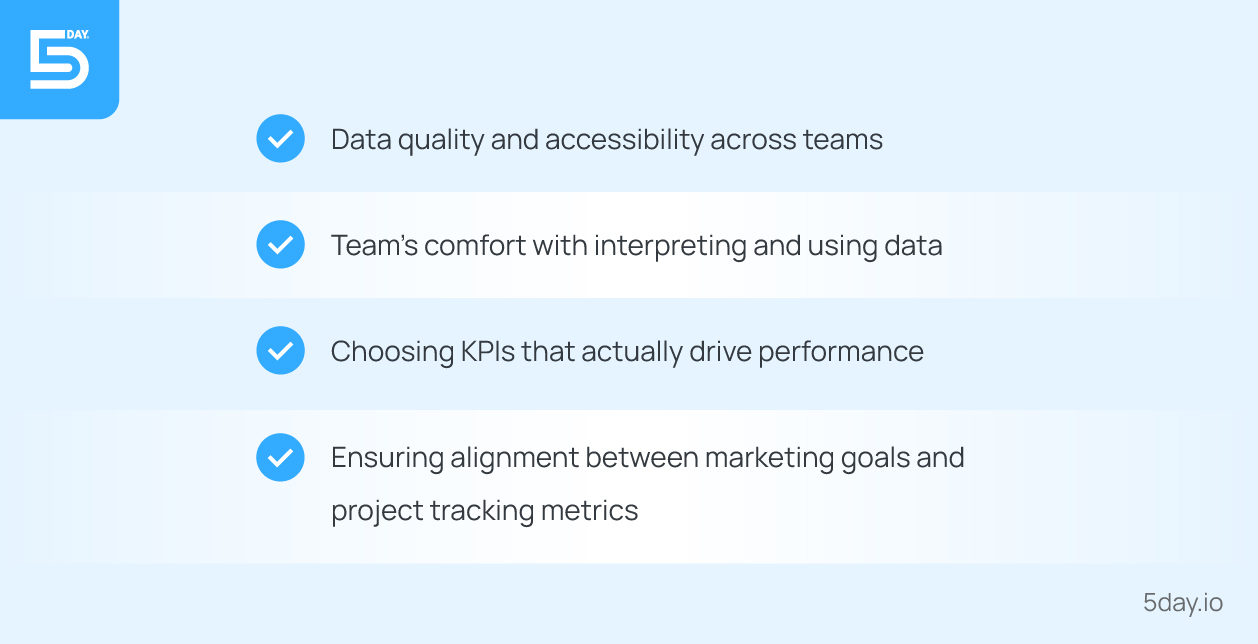
For marketing project managers, the shift means building a data-aware culture and ensuring that insights lead to action.
Below are the most critical factors to consider when leading data-driven marketing projects.
Data quality and accessibility across teams
For project managers, one of the biggest hurdles is ensuring that teams have access to clean, and centralized data.
In many organizations, data is fragmented across platforms. If these tools don’t integrate well with the marketing team project management tool, it becomes difficult to get a complete picture of campaign performance or project health.
To address this, project managers must:
- Work with marketing ops and tech teams to integrate key platforms
- Ensure consistent data definitions across departments (e.g., what counts as a conversion?)
- Establish automated data flows where possible to reduce manual errors
- Prioritize tools that offer shared visibility and role-based access
Team’s comfort with interpreting and using data
Having access to data is one thing, knowing what to do with it is another.
For project managers to succeed in a data-driven environment, their teams must be comfortable reading, interpreting, and applying insights from dashboards, reports, and KPIs.
Not everyone on a marketing team comes from an analytical background, so it’s crucial to:
- Build basic data literacy across roles, especially among creative and content teams
- Offer short trainings or workshops on how to use project dashboards or interpret metrics
- Foster a culture where data questions are welcome, and decisions are made collectively
- Pair analytical thinkers with less-experienced team members to bridge the gap
The goal is to create a team that speaks the same language when it comes to outcomes.
Choosing KPIs that actually drive performance
Vanity metrics, like page views, impressions, or followers can look impressive but often say little about true impact or ROI.
Data-driven project managers must ensure that every KPI is:
- Tied directly to a business or campaign objective (e.g., lead generation, revenue, user retention)
- Actionable, i.e., it should prompt a response if it rises or falls
- Trackable in real time, where possible, to support in-flight data-driven decision-making in marketing
- Aligned with both marketing and project success criteria
- Ensuring alignment between marketing goals and project tracking metrics
A well-run marketing project drives measurable outcomes.
That’s why it’s essential that project tracking metrics (like task completion rates, or budget utilization) are aligned with higher-level marketing goals (such as brand lift, or customer engagement).
This alignment requires ongoing coordination between project managers and marketing leads. Specifically:
- At the project planning stage, ensure that every task and milestone maps back to a clear campaign objective
- Use reporting tools that combine operational metrics (task progress) with performance metrics (results)
- Regularly revisit metrics mid-project to course-correct when goals shift
When tracking metrics and business goals are disconnected, teams may appear to be “on track” while failing to deliver results.
Importance of insights in project management for marketing teams & agencies
They tell us what’s working, what’s not, where time is being spent, and how projects can move forward more efficiently.
For marketing teams and agencies alike, project insights are the bridge between smart planning and successful execution.
Whether you’re juggling internal campaigns or managing multiple clients, insights provide the visibility needed to prioritize better, anticipate challenges, and deliver strong, measurable outcomes.
This is where project management insights become a marketer’s best friend.
For agencies, insights are even more powerful. They serve to show clients how efficiently and strategically the project was managed.
Read Also: Future of Agency Workflows
Insights also help manage expectations. For example, if historical data shows that a brand campaign typically takes 6–8 weeks from strategy to launch, you can set realistic timelines upfront
Key metrics to track in marketing project management
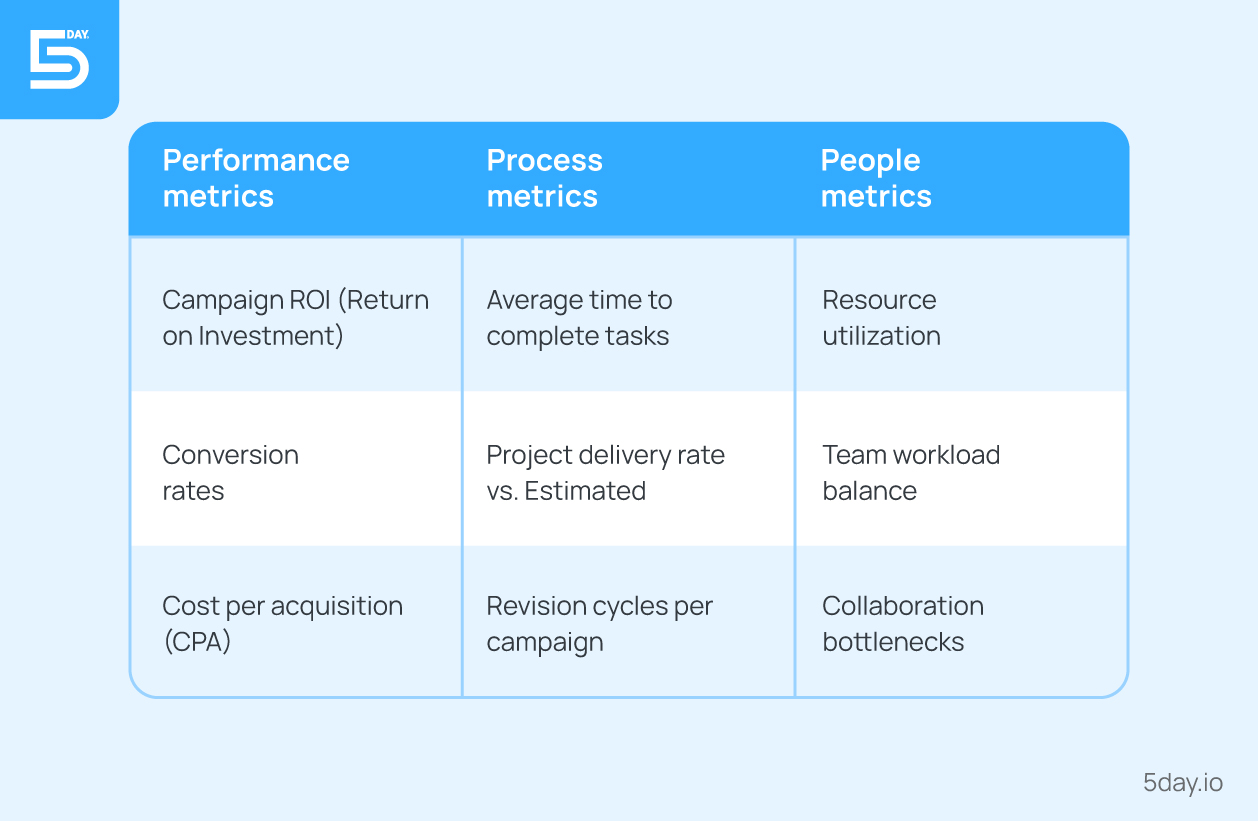
To make it simple, let’s break the key metrics into three essential categories: Performance, Process, and People.
Performance metrics: How well is the campaign doing?
Performance metrics are your scoreboard. These are the numbers that tell you whether the campaign is hitting its goals or missing the mark.
Campaign ROI (Return on Investment)
The most fundamental metric: how much value did the campaign generate compared to what you spent? Whether it’s leads, sales, or brand lift, ROI shows stakeholders that your efforts delivered tangible results.
Conversion rates
It’s about action. Whether it’s form submissions, purchases, sign-ups, or downloads, conversion rates tell you how effective your campaigns are at turning interest into outcomes.
Cost per acquisition (CPA)
How much does it cost to acquire one customer, or lead? CPA helps you assess efficiency and informs how to allocate your budget across channels.
Process metrics: How smoothly are projects running?
Process metrics are all about how the work gets done. They help you spot inefficiencies and improve how your team operates day-to-day. These insights are crucial for better forecasting, and ultimately, delivering high-quality campaigns on time.
Average time to complete tasks
Are certain tasks or campaign phases taking longer than expected? Tracking task durations helps you understand where time is being spent, and whether that time is well used.
Project delivery rate vs. estimated
How accurate are your original project timelines? Are you consistently delivering as planned, or do projects run over schedule? This metric keeps you honest and helps refine your planning process.
Revision cycles per campaign
Too many rounds of feedback or revisions can drain time and morale. This metric reveals whether your briefs are clear, and your creative team is efficient.
Read Also: Guide to Client Collaboration in Marketing Agencies
People metrics: How healthy is your team?
People metrics help you understand team capacity and foster better collaboration. These insights are critical for long-term sustainability.
Resource utilization
Are people underused or stretched too thin? Tracking utilization ensures your team is operating at a healthy capacity, not idling or overloading.
Team workload balance
Is the work distributed fairly? Do some team members consistently carry more weight than others? Workload balance metrics help PMs reallocate tasks and avoid silos.
Collaboration bottlenecks
Where is the project deliverable getting stuck, handoffs, approvals, unclear ownership? Identifying these friction points allows you to streamline collaboration and move projects forward more smoothly.
Healthy teams build better campaigns. People metrics help you support your team proactively, not just react when things go wrong.
Why 5day.io is built for data-driven marketing teams
Marketing teams today need systems and project management software that offer real-time insights and help them prove value to stakeholders. That’s exactly why 5day.io is built as an insight engine designed for data-driven marketing teams and agencies.
It’s your insight engine
5day.io turns your work into actionable project insights for marketing. With built-in analytics in marketing project management, and real-time visibility across campaigns, it empowers marketers to look into what’s happening, and what’s delivering results.
Live progress bars + campaign performance scores
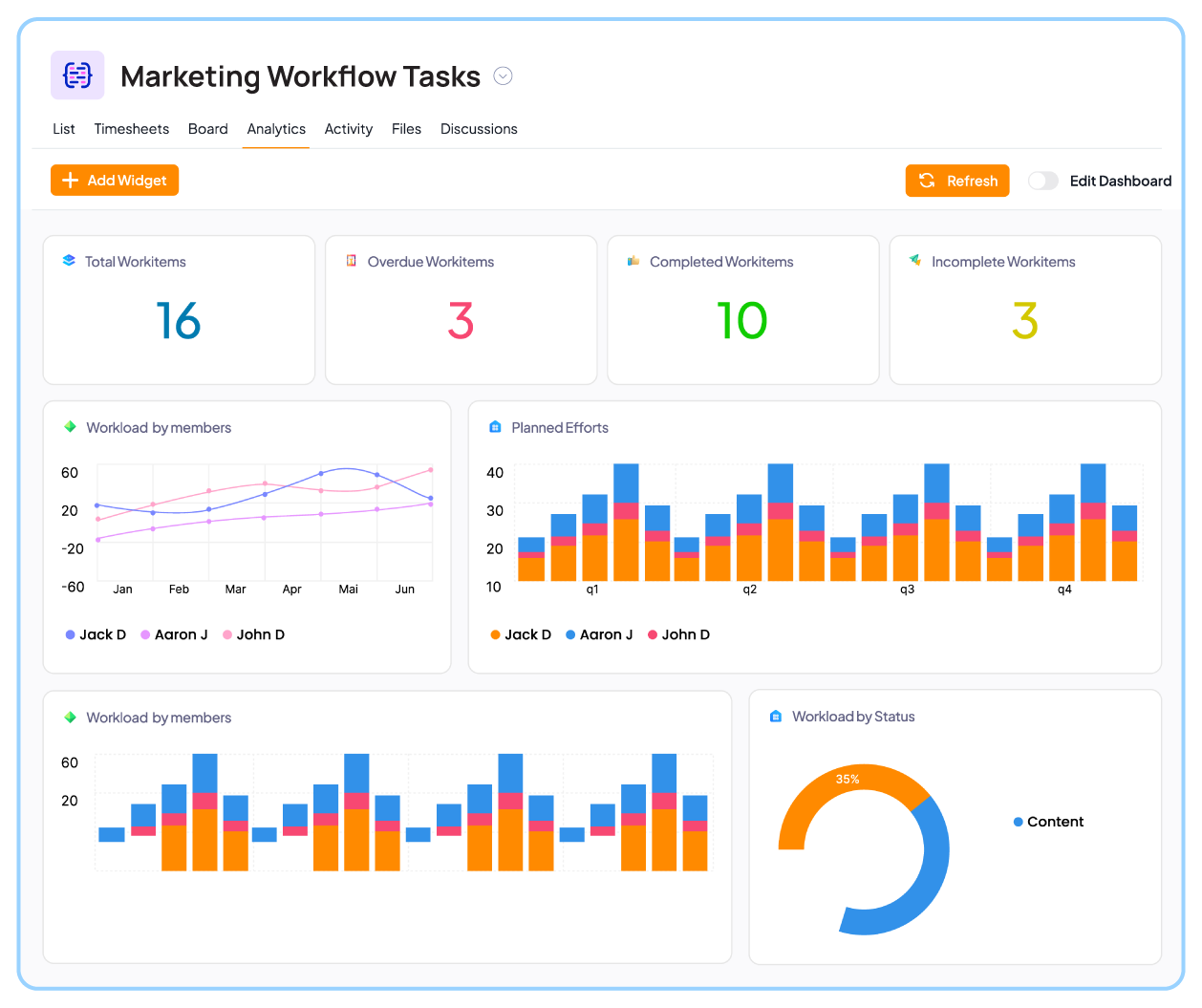
Tired of wondering whether your campaign is 60% done or almost there? 5day.io eliminates the guesswork.
With live progress bars, and across creative, copy, accounts, and strategy. This helps project managers reassign work quickly and make data-driven marketing decisions based on what’s really happening, not just what was scheduled.
Custom dashboards by role: Clarity for every contributor

One of 5day.io’s most marketing-friendly features is its ability to build custom dashboards based on roles. Copywriters can focus on deadlines, briefs, and loops. Designers can track creative tasks, and file handoffs. Account managers see timelines, and client status, all in one clean view.
This tailored visibility in the project management software for marketing means every team member has exactly what they need to do their best work.
Manage multiple clients easily
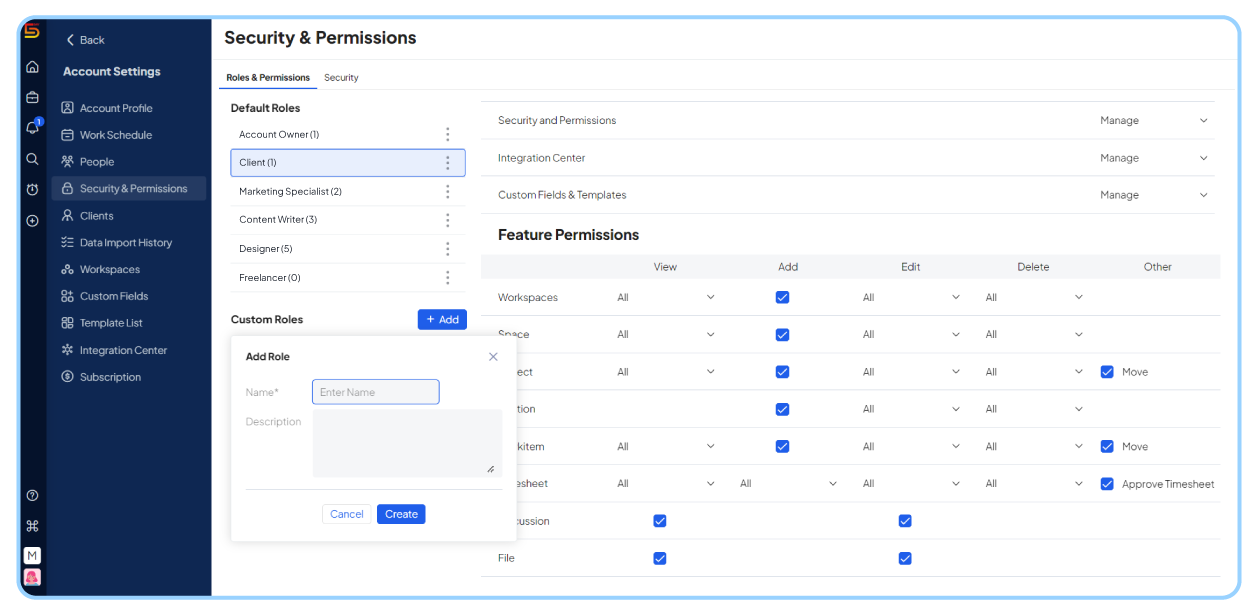
5day.io offers a dedicated Client Association feature, so agencies can manage multiple client projects under one workspace. Need to show a client how their campaign is progressing? With project-level analytics, list and Board views, and time logs, you can present a clear, professional snapshot at any moment. Onboard them with controlled visibility and foster a long-term transparent relationship with your clients.
Lightweight, agile, and fast to set up

Marketing teams don’t have weeks to implement new tools. That’s why 5day.io is built for quick onboarding and immediate value. With intuitive views (like Board and List), drag-and-drop task creation, and bulk imports, you can have your entire marketing team or agency running in under a day.
It’s lightweight where it needs to be, without sacrificing power.
Built for the way marketing teams work today
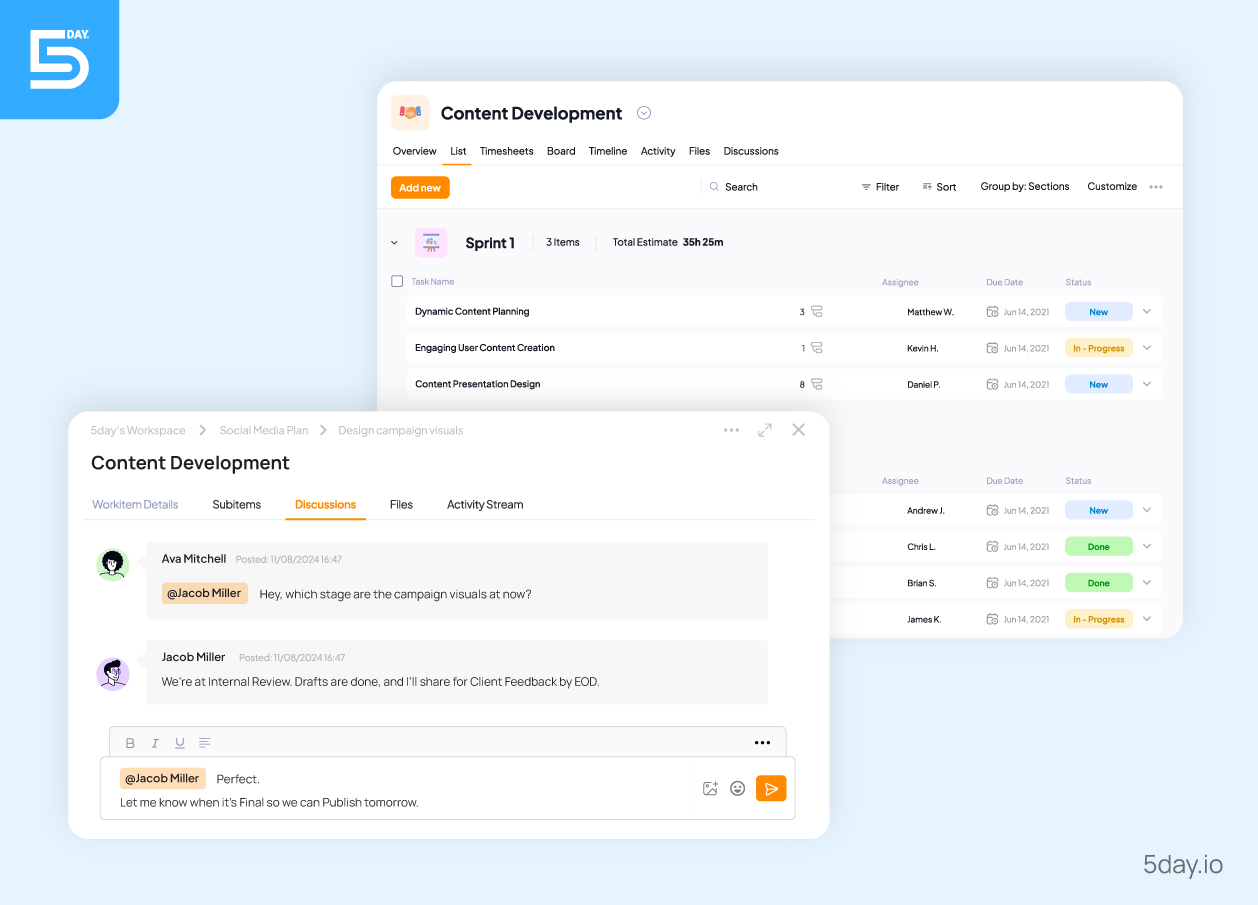
5day.io understands that marketers live in a hybrid world of deadlines, sprints, feedback loops, and performance pressure.
That’s why it brings together:
- Task + time tracking (including billable/non-billable logging)
- Project-based analytics with customizable widgets
- Role-based views and permissions
- Smart reminders and recurring tasks
- Workflow automation
- Write with AI prompts and descriptions
- Real-time collaboration through comments, tagging, and file uploads
All this, combined with integrations, mobile access, and AI-powered writing and navigation support, makes 5day.io a marketing-native platform, not a one-size-fits-all PM tool.
Wrapping up
For modern marketing teams and agencies navigating tight timelines, and performance demands, 5day.io offers clarity, and measurable impact. With features like tailored dashboards for every role, and seamless client reporting, 5day.io empowers you to work smarter, and streamline data-driven decision making in marketing
Sign up for our 3-month free trial today and get full access to the tool, premium support and world-class project management capabilities.



